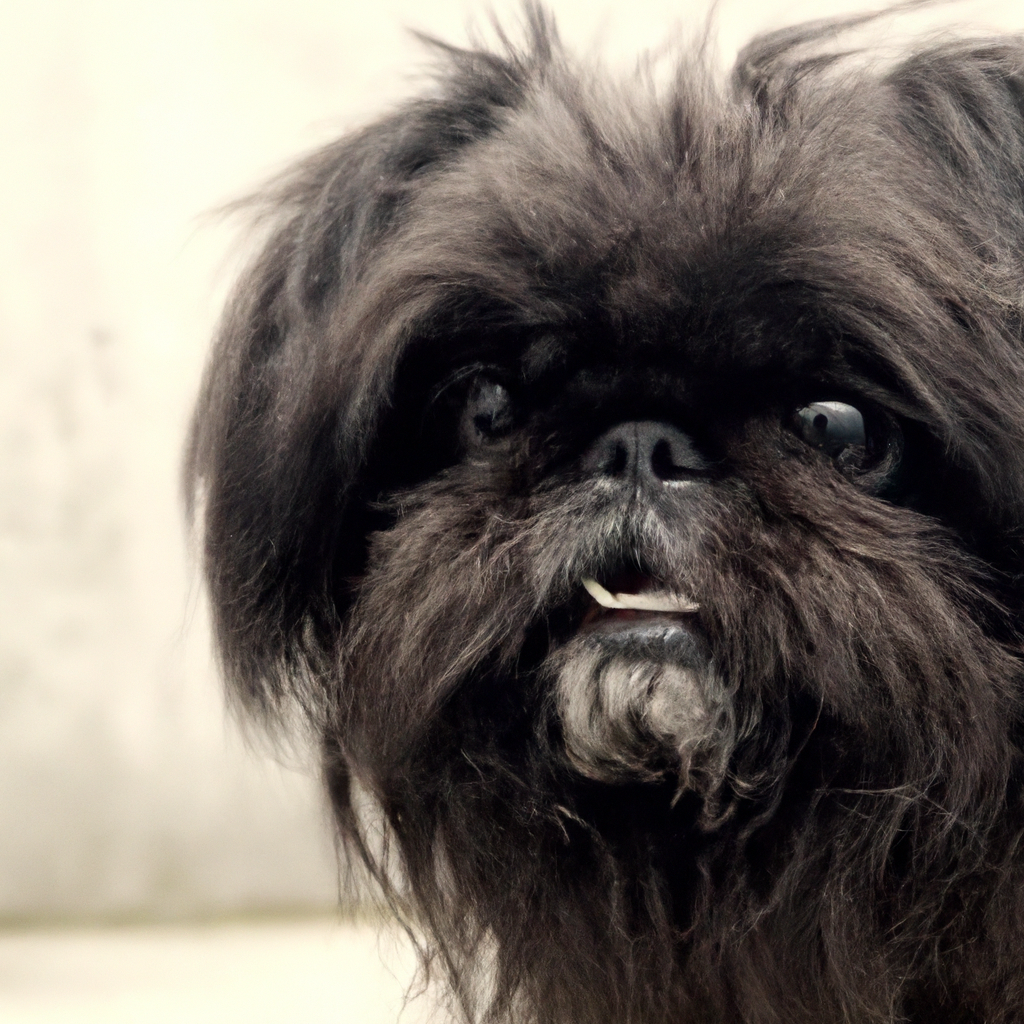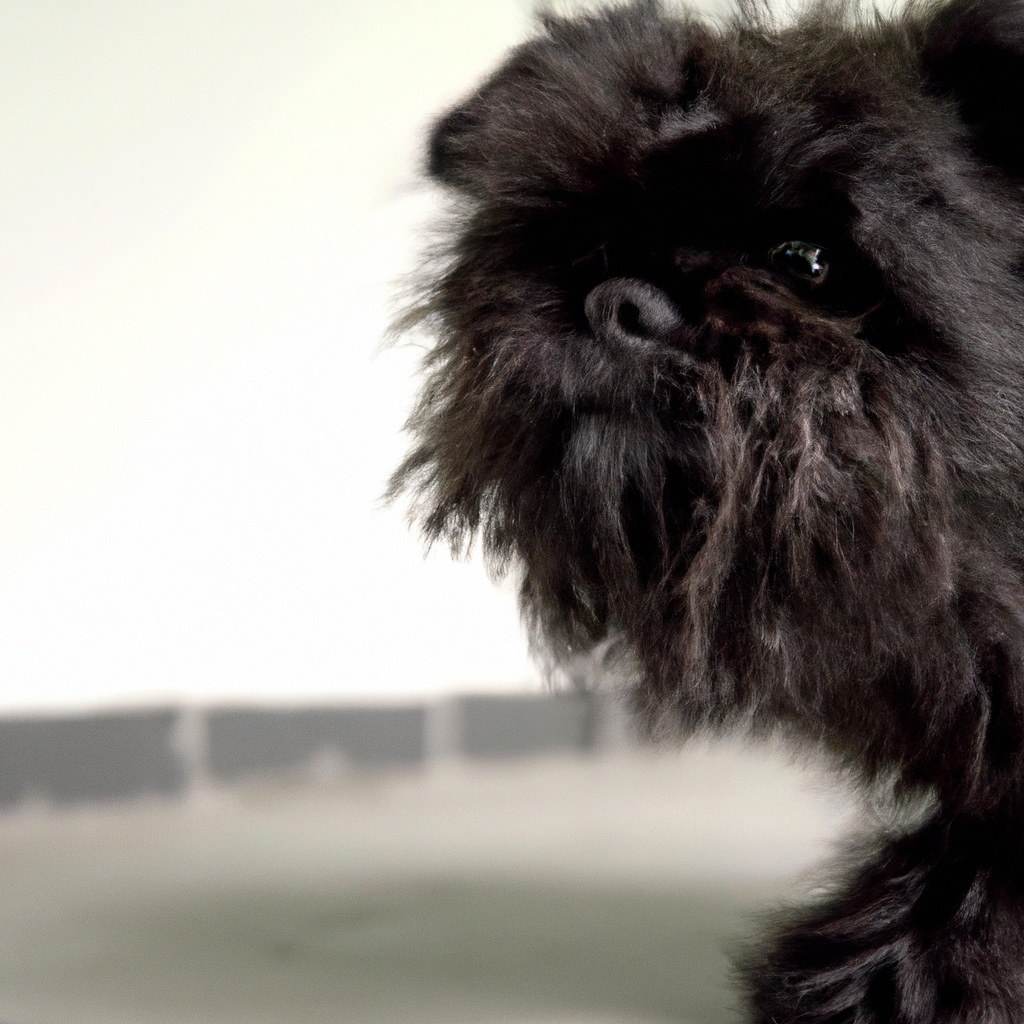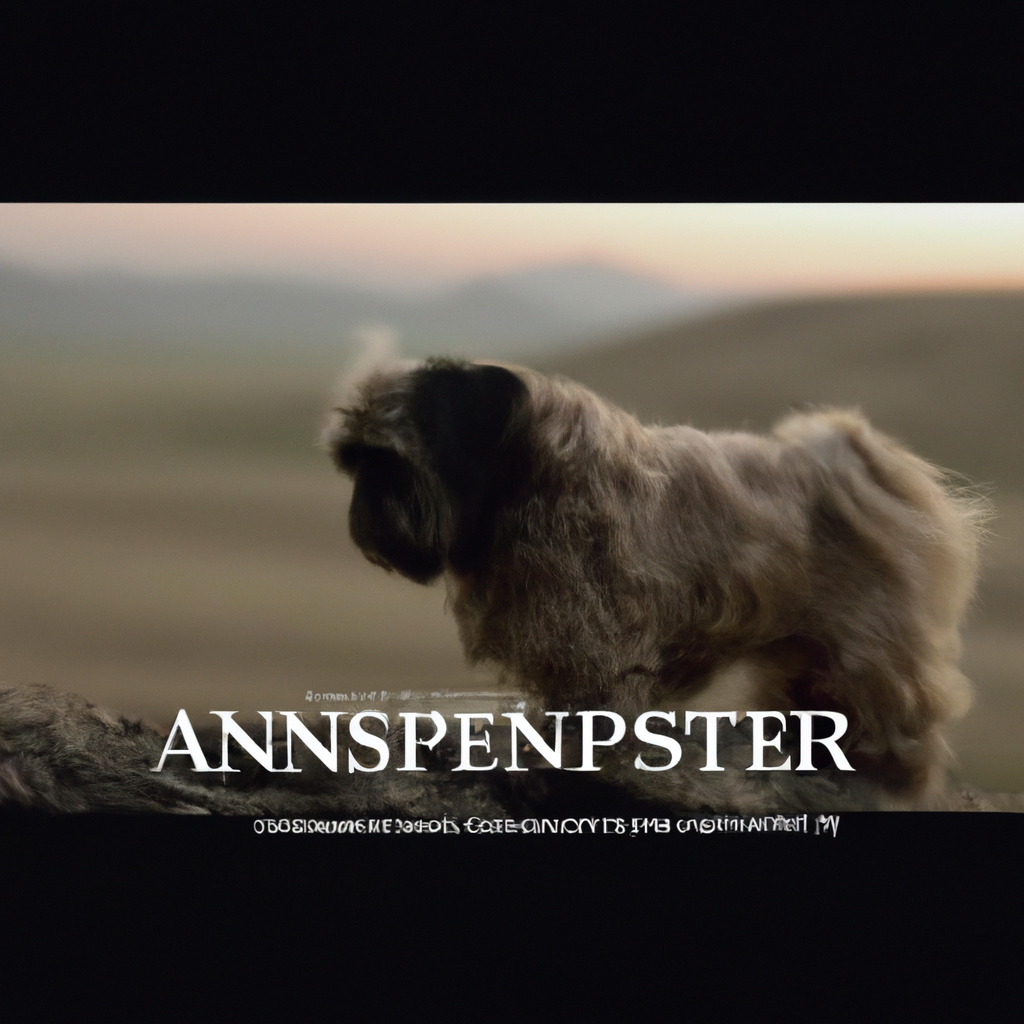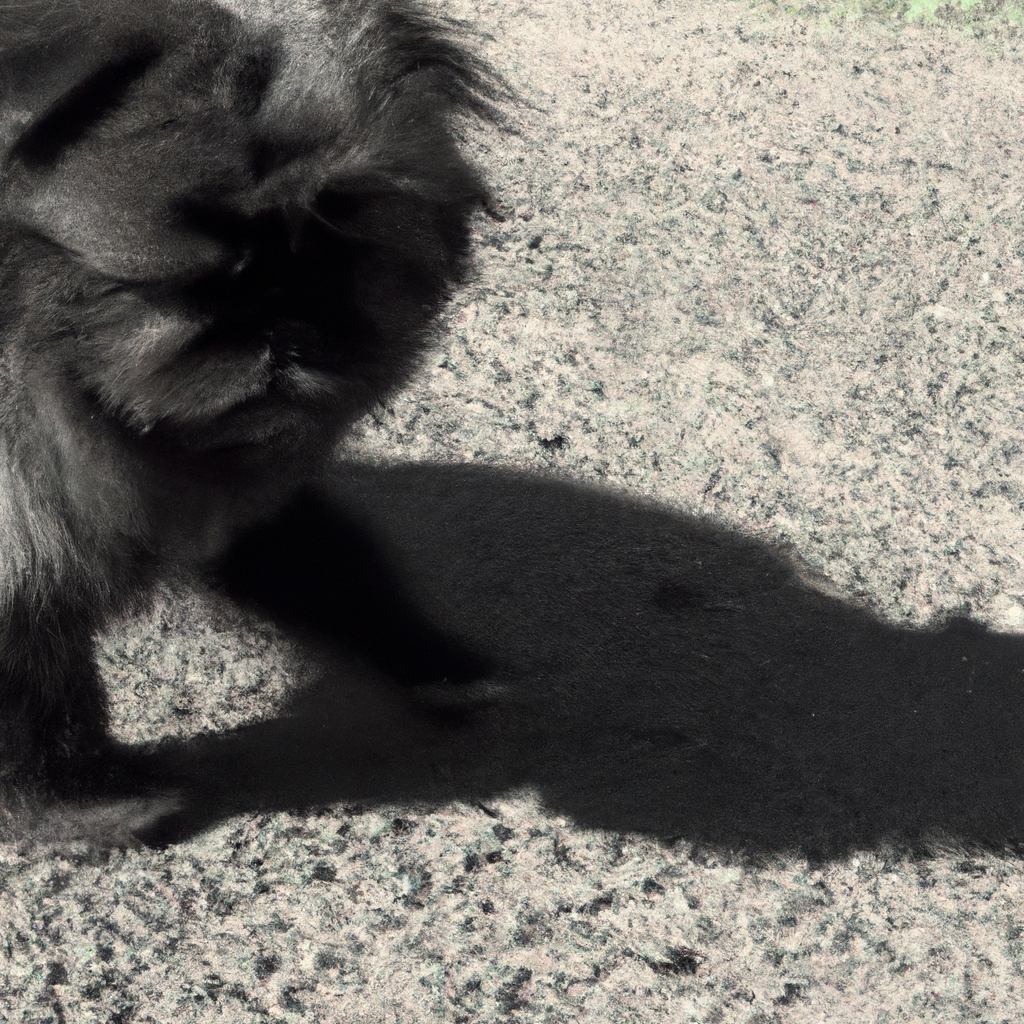The history of Affenpinschers dates back to the 17th century in Germany. The breed’s name, which translates to “monkey terrier” in German, is a reference to its primate-like appearance and personality. Originally, Affenpinschers were larger than the current breed and were used to hunt rats and other pests in homes and stables. Over time, they were bred to be smaller for the purpose of being companion dogs. Despite their diminutive size, they retained their bold and protective nature. The breed was officially recognized by the American Kennel Club in 1936. However, due to World War II, the breeding of Affenpinschers was almost halted and the breed nearly became extinct. It was only in the 1950s that the breed was revived and has since gained popularity worldwide.
The Origins and Early History of Affenpinschers
Affenpinschers, often referred to as “Monkey Terriers” or “Monkey Dogs” due to their distinct primate-like appearance, have a rich and fascinating history that dates back several centuries. Originating from Germany, these small but feisty dogs have captured the hearts of many with their unique charm and playful demeanor.
The Affenpinscher’s story begins in the 17th century, where they were initially bred to serve as ratters in homes, stables, and shops. Their small size and agile nature made them excellent at hunting and killing rats and mice, a task that was of great importance during a time when infestations were common and could lead to disease and destruction of goods. The name “Affenpinscher” itself translates to “Monkey Terrier” in German, a nod to their monkey-like faces and terrier-like tenacity.
As time went on, Affenpinschers began to be appreciated not just for their practical skills, but also for their companionship. Their lively and adventurous spirit, coupled with their loyalty and affection towards their owners, made them popular pets among the German elite. By the 18th century, Affenpinschers were often seen in the homes of ladies of high society, where they were pampered and adored.
However, it wasn’t until the late 19th century that Affenpinschers began to be bred for their looks. Breeders started to favor smaller sizes and more distinct facial features, leading to the Affenpinscher we know and love today. This period also saw the Affenpinscher being crossed with other breeds, such as the Pug and the German Silky Pinscher, to enhance certain traits.
The Affenpinscher’s journey wasn’t always smooth sailing. The two World Wars in the 20th century had a significant impact on the breed, with their numbers dwindling dangerously low due to the hardships of war. It was thanks to the efforts of dedicated breeders that the Affenpinscher was saved from the brink of extinction.
The breed’s popularity began to rise again in the mid-20th century, particularly in the United States. The American Kennel Club officially recognized the Affenpinscher in 1936, but it wasn’t until the 1950s that the breed began to gain more attention. Today, while still relatively rare compared to other breeds, the Affenpinscher has a dedicated following of enthusiasts who appreciate the breed’s unique characteristics and history.
In conclusion, the Affenpinscher’s history is a testament to the breed’s resilience and charm. From their early days as ratters in Germany to their status as beloved pets and show dogs, Affenpinschers have proven to be adaptable and enduring. Their distinctive looks, coupled with their spirited and affectionate nature, make them a breed that is truly one-of-a-kind. Whether you’re a fan of their monkey-like faces, their terrier-like tenacity, or their rich history, there’s no denying that the Affenpinscher is a breed that leaves a lasting impression.
Affenpinschers: From Farm Dogs to Show Dogs
Affenpinschers, affectionately known as “monkey dogs” due to their distinct primate-like appearance, have a rich and fascinating history that dates back several centuries. Originating from Germany, these small but sturdy dogs were initially bred for a very practical purpose – to serve as ratters on farms. However, over time, their role has evolved significantly, and they have transitioned from being farm dogs to show dogs, gracing the stages of dog shows around the world with their unique charm and charisma.
The Affenpinscher’s journey began in the 17th century in Germany. Back then, these dogs were larger than the Affenpinschers we know today, and they were primarily used to keep farms free from rats and other pests. Their small size, agility, and fearless nature made them excellent ratters, capable of squeezing into tight spaces and chasing away or killing vermin. They were highly valued by farmers for their work ethic and their ability to protect grain stores from destruction.
As time went on, the Affenpinscher began to catch the eye of the urban populace. Their unique appearance, coupled with their lively and affectionate nature, made them popular pets among the city dwellers. In response to this growing demand, breeders started to selectively breed Affenpinschers to be smaller and more companionable. By the late 19th century, the Affenpinscher had transformed from a farm dog to a beloved pet, often seen in the homes of the bourgeoisie and aristocracy.
The turn of the 20th century saw the Affenpinscher making its debut in the show ring. The breed was officially recognized by the American Kennel Club (AKC) in 1936, and since then, it has been a regular participant in dog shows across the United States. Despite their small size, Affenpinschers have a big presence in the ring, impressing judges with their confident strut, expressive faces, and luxurious coats.
However, the journey of the Affenpinscher has not always been smooth sailing. The breed faced near extinction during World War II, as many dog breeds did, due to the hardships of the war. But thanks to the efforts of dedicated breeders, the Affenpinscher was brought back from the brink. Post-war, the breed was reintroduced to the United States by a handful of enthusiasts who worked tirelessly to reestablish the breed.
Today, the Affenpinscher is cherished both as a show dog and a companion. They may no longer be ridding farms of rats, but they have found a new purpose in the hearts and homes of their owners. Their spirited and playful nature, combined with their loyalty and affection, make them wonderful pets. And in the show ring, they continue to captivate audiences with their unique charm.
In conclusion, the history of Affenpinschers is a testament to their resilience and adaptability. From their humble beginnings as farm dogs in Germany to their current status as beloved pets and show dogs, they have navigated the changing tides of time with grace and tenacity. And while they may be small in size, their impact on the hearts of those who know them is immeasurable.
The Role of Affenpinschers in World War II
The Affenpinscher, a small but mighty breed, has a rich and fascinating history that dates back several centuries. However, one of the most intriguing chapters in the Affenpinscher’s story is its role during World War II. This period was a time of great upheaval and uncertainty, and the Affenpinscher, like many other breeds, found itself in the midst of the chaos.
As the war broke out, the Affenpinscher, known for its fearless and protective nature, was put to work in various capacities. In the early stages of the war, these dogs were often used as ratters in military camps and on naval ships. Their small size and agile nature made them perfect for hunting and catching rats, which were a significant problem in these environments. This role was crucial in preventing the spread of diseases and maintaining hygiene standards, which was a matter of life and death during the war.
However, the Affenpinscher’s role in World War II was not limited to pest control. As the war progressed, these dogs were also used as therapy dogs to provide comfort and companionship to soldiers. The psychological toll of the war was immense, and the presence of these small, friendly dogs helped to alleviate some of the stress and anxiety experienced by the soldiers. The Affenpinscher’s playful and affectionate nature made them perfect for this role, and they were often seen in the company of soldiers during their downtime, providing a much-needed distraction from the horrors of war.
But perhaps the most significant role that the Affenpinscher played during World War II was as a messenger dog. With their keen sense of smell and ability to navigate challenging terrains, these dogs were used to deliver messages between different units on the battlefield. This was a dangerous task, as it often involved crossing enemy lines, but the Affenpinscher’s small size and agility allowed them to evade detection and complete their missions successfully.
Despite their significant contributions to the war effort, the Affenpinscher, like many other breeds, suffered greatly during this period. The war led to a shortage of resources, and many dogs were abandoned or left to fend for themselves. The breeding of Affenpinschers also declined significantly during this time, as people’s priorities shifted towards survival.
However, in the aftermath of the war, efforts were made to revive the breed. Soldiers returning home brought with them stories of the Affenpinscher’s bravery and loyalty, sparking renewed interest in the breed. Breeding programs were established to increase the population of Affenpinschers, and over time, the breed made a successful comeback.
Today, the Affenpinscher is a beloved pet in many households around the world. While they may no longer be used as ratters or messenger dogs, their fearless and protective nature remains. The Affenpinscher’s history during World War II is a testament to the breed’s resilience and adaptability, qualities that continue to endear them to dog lovers everywhere.
In conclusion, the Affenpinscher’s role in World War II was multifaceted and significant. From serving as ratters and therapy dogs to acting as messengers on the battlefield, these small but mighty dogs proved their worth in numerous ways. Despite the challenges they faced, the Affenpinscher’s story during this period is one of resilience and survival, a testament to the breed’s enduring spirit.
The Evolution of Affenpinschers Through the Centuries
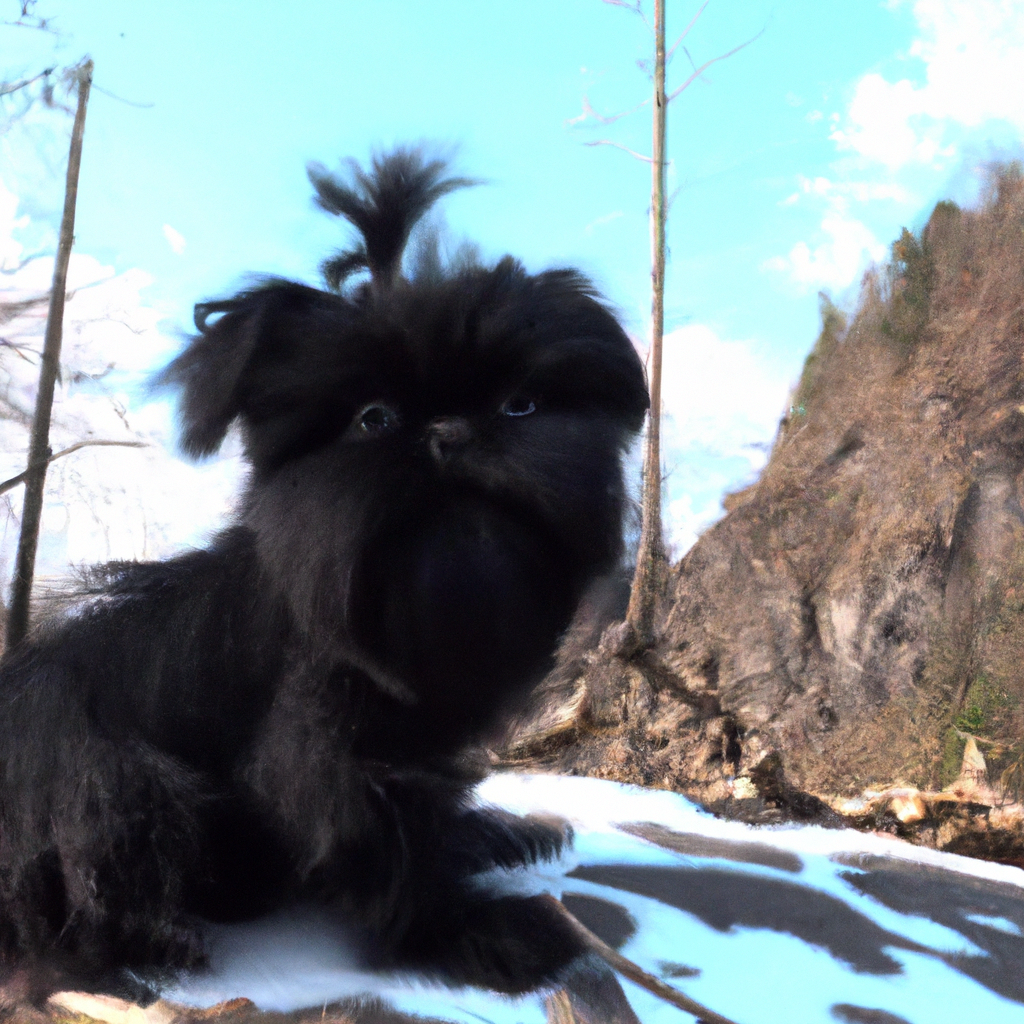
The Affenpinscher, a breed of dog that is often referred to as the “Monkey Terrier” due to its primate-like appearance, has a rich and fascinating history that spans several centuries. This breed, known for its distinctive, wiry coat and expressive face, has evolved significantly over time, both in terms of its physical characteristics and its role in human society.
The Affenpinscher’s story begins in the 17th century in Germany, where it was initially bred to serve as a ratter in homes and stables. Its small size, agility, and tenacious spirit made it an excellent choice for this task. The breed’s name, Affenpinscher, translates to “monkey terrier” in German, a nod to its unique, monkey-like facial features.
As the centuries rolled on, the Affenpinscher began to evolve. Breeders started to focus more on the dog’s appearance, aiming to enhance its distinctive features. This led to the Affenpinscher we know today, with its rough, shaggy coat, bushy eyebrows, and beard. Despite these changes, the breed retained its original tenacity and spirit, qualities that are still admired in the Affenpinscher today.
In the 19th century, the Affenpinscher’s role began to shift. While it was still used as a ratter in some areas, it increasingly became a companion dog for ladies of the upper class. Its small size and unique appearance made it a popular choice as a lap dog. This shift in role also led to a change in the breed’s size. Breeders began to select for smaller dogs, leading to the diminutive size of the modern Affenpinscher.
The Affenpinscher’s journey took it across the Atlantic in the early 20th century, where it quickly gained popularity in the United States. The American Kennel Club recognized the breed in 1936, further cementing its status. However, World War II led to a decline in the breed’s popularity, as breeding dogs was not a priority during these challenging times.
Post-war, the Affenpinscher made a comeback, and by the 1950s, it was once again a popular breed in the United States. Today, the Affenpinscher is cherished for its unique appearance and spirited personality. It’s a favorite at dog shows, with an Affenpinscher named Banana Joe even winning Best in Show at the Westminster Kennel Club Dog Show in 2013.
Despite its evolution over the centuries, the Affenpinscher has retained its original charm and tenacity. Whether serving as a ratter in 17th century Germany or winning hearts as a companion dog in the 21st century, the Affenpinscher has proven to be a versatile and endearing breed. Its history is a testament to its adaptability and enduring appeal.
In conclusion, the Affenpinscher’s history is as unique and fascinating as the breed itself. From its origins as a ratter in Germany to its status as a beloved companion dog today, the Affenpinscher has evolved while maintaining its distinctive characteristics. This small but spirited breed, with its monkey-like face and shaggy coat, continues to win hearts around the world, proving that sometimes, the best things do come in small packages.
Affenpinschers: Their Journey to America
Affenpinschers, often referred to as “monkey dogs” due to their distinct primate-like appearance, have a rich and fascinating history that dates back several centuries. These small, sturdy dogs, known for their mischievous personality and expressive faces, have journeyed from their origins in Germany to become beloved pets in households across America.
The Affenpinscher’s story begins in the 17th century in Germany. They were initially bred to be ratters, working dogs that kept stables, shops, and homes free from rats and other vermin. Their small size, agility, and tenacity made them perfect for this role. Over time, these dogs were selectively bred to be smaller, transitioning from working dogs to companions for ladies in the urban households of Germany. Their unique appearance, coupled with their playful and loving nature, made them a popular choice.
As the 19th century rolled around, the Affenpinscher had become a fixture in German society. However, it was during this time that the breed began to evolve into the Affenpinscher we know today. Breeders started to focus more on their unique facial features, aiming to enhance their monkey-like appearance. This led to the Affenpinscher’s distinctive look, with their round eyes, bushy eyebrows, and beard.
The Affenpinscher’s journey to America began in the early 20th century. The first recorded Affenpinscher to set paw on American soil was a dog named ‘Henry’, who arrived in 1935. However, the breed’s popularity didn’t take off immediately. The onset of World War II put a halt to many dog breeding programs, and the Affenpinscher was no exception. It wasn’t until the 1950s that the breed began to gain traction in America.
The American Kennel Club (AKC) officially recognized the Affenpinscher in 1936, but it was a slow start for these little dogs. The first Affenpinscher champion, a dog named ‘Nolli v. Anwander’, didn’t claim the title until 1952. From there, the breed’s popularity began to grow steadily. By the 1980s and 1990s, the Affenpinscher had become a popular choice for dog lovers looking for a small, lively companion with a big personality.
Today, the Affenpinscher is a beloved member of many American households. They are known for their loyalty, intelligence, and playful nature. Despite their small size, these dogs have a big heart and a lot of love to give. They are also known for their protective nature, always ready to stand guard for their family.
The journey of the Affenpinscher from the stables of Germany to the living rooms of America is a testament to the breed’s adaptability and charm. These ‘monkey dogs’ have captured the hearts of many with their unique looks and playful personalities. Despite their small stature, they have made a big impact, leaving a lasting paw print on the world of dog breeds. The Affenpinscher’s history is a rich tapestry that continues to be woven with every new generation of these delightful dogs.
The Affenpinscher: A Detailed Look at Its Historical Background
The Affenpinscher, a breed of dog that is as unique as its name, has a rich and fascinating history. This breed, known for its distinctive monkey-like face, is a small but mighty companion that has been charming humans for centuries.
The Affenpinscher’s story begins in Germany in the 17th century. The breed’s name, which translates to “monkey terrier” in German, is a nod to its primate-like features and terrier-like tenacity. Initially, these dogs were larger than the Affenpinschers we know today, and they were primarily used as ratters on farms and in homes. Their small size and agile nature made them excellent at hunting and killing rats and other vermin, a task that was crucial in a time before modern sanitation practices.
As the years passed, the Affenpinscher began to evolve. Breeders started to favor smaller sizes, and by the 18th and 19th centuries, the Affenpinscher had become a beloved lapdog of the European elite. Their compact size, coupled with their lively and affectionate nature, made them perfect companions for ladies of high society. They were often seen in the laps of their owners, riding in carriages, or even tucked into the large sleeves of women’s dresses.
Despite their popularity in Europe, Affenpinschers remained relatively unknown in other parts of the world until the late 19th century. The breed was first introduced to the United States in 1936, but World War II halted any significant growth in their popularity. It wasn’t until the 1950s that the Affenpinscher began to gain recognition in America.
The American Kennel Club (AKC) officially recognized the Affenpinscher in 1936, and the breed has been a part of the Toy Group since its inception. The AKC describes the Affenpinscher as “confident, famously funny,” and “fearless.” These traits, along with their loyalty and affectionate nature, make them excellent companions.
Despite their small size, Affenpinschers are known for their courage and determination. They are often described as being “big dogs in small bodies,” a testament to their fearless nature and tenacity. This trait likely stems from their origins as ratters, where they had to be brave and persistent to fulfill their roles.
Today, the Affenpinscher is a beloved breed worldwide. They are cherished for their unique appearance, their lively personalities, and their unwavering loyalty to their owners. While they may no longer be used as ratters, their tenacity and courage still shine through in their everyday lives.
In conclusion, the Affenpinscher’s history is a testament to the breed’s adaptability and charm. From their origins as ratters in Germany to their status as beloved companions today, these “monkey terriers” have proven to be a unique and enduring breed. Their distinctive looks, combined with their lively personalities and fearless nature, make them a breed that is truly one-of-a-kind. Whether they’re keeping your lap warm or making you laugh with their antics, Affenpinschers are a breed that is sure to bring joy and companionship to any home.
The Affenpinscher in Popular Culture: A Historical Perspective
The Affenpinscher, a small but mighty breed, has a rich history that is as fascinating as the dog itself. Known for their monkey-like faces and playful personalities, these dogs have been capturing hearts for centuries. But did you know that they have also made quite a splash in popular culture? Let’s take a historical journey to explore the Affenpinscher’s influence on society.
Originating in Germany in the 17th century, the Affenpinscher was initially bred to be a ratter, keeping homes and stables free of rodents. Their name, which translates to “monkey terrier” in German, is a nod to their primate-like faces. However, it wasn’t long before these dogs transitioned from working animals to beloved pets, thanks to their endearing looks and spirited personalities.
As the Affenpinscher’s popularity grew, so did their presence in popular culture. In the 18th and 19th centuries, these dogs began appearing in paintings and literature. They were often depicted as companions to the wealthy and noble, reflecting their status as a fashionable breed. Artists like Jean-Baptiste Oudry and Sir Edwin Landseer included Affenpinschers in their works, immortalizing the breed’s distinctive features on canvas.
In the early 20th century, the Affenpinscher made its way to the silver screen. The 1937 film “Topper” featured an Affenpinscher named Mr. Atlas, who stole the show with his comedic antics. This marked one of the first times an Affenpinscher was featured prominently in a film, paving the way for future appearances.
The Affenpinscher’s influence on popular culture continued to grow throughout the 20th century. In the 1950s and 60s, they were often seen in television shows and commercials, further cementing their place in the public’s heart. Their unique looks and lively personalities made them a natural fit for the entertainment industry.
In recent years, the Affenpinscher has made headlines in the world of dog shows. In 2013, an Affenpinscher named Banana Joe won Best in Show at the Westminster Kennel Club Dog Show, one of the most prestigious dog shows in the world. This marked the first time an Affenpinscher had won this title, bringing the breed into the spotlight once again.
Despite their small size, Affenpinschers have made a big impact on popular culture. From their early days as ratters in Germany to their modern-day status as show dogs and movie stars, these dogs have proven that they are more than just a pretty face. Their history is a testament to their enduring appeal and the joy they bring to people’s lives.
So, the next time you see an Affenpinscher, whether it’s in a painting, a movie, or even in your neighborhood, remember the rich history behind this charming breed. These dogs have been making waves in popular culture for centuries, and it’s clear that their star isn’t fading anytime soon. The Affenpinscher’s journey through history is a fascinating tale of evolution, popularity, and cultural influence, proving that sometimes, the smallest dogs can have the biggest impact.
The Affenpinscher: Its History and Impact on Modern Breeds
The Affenpinscher, a breed of dog that is often referred to as the “Monkey Terrier” due to its primate-like appearance, has a rich and fascinating history. This breed, which originated in Germany, has made a significant impact on many modern breeds we know and love today.
The Affenpinscher’s history dates back to the 17th century, where it was primarily used as a ratter in homes, stables, and shops. Its small size and agile nature made it an excellent choice for keeping rat populations under control. The name “Affenpinscher” itself translates to “monkey terrier” in German, a nod to its distinctive facial features that bear a striking resemblance to monkeys.
In the early days, Affenpinschers were larger than the ones we see today, with some reaching up to a foot tall. However, as the breed evolved, they were bred to be smaller to make them more suitable for domestic life. Despite their size reduction, they retained their fearless and energetic nature, making them excellent companions and watchdogs.
The Affenpinscher’s journey to popularity was not a straightforward one. It was not until the late 19th century that this breed began to gain recognition. During this time, they were often featured in works of art, which helped increase their visibility and popularity. By the early 20th century, the Affenpinscher had made its way to America, where it was officially recognized by the American Kennel Club in 1936.
However, World War II had a significant impact on the breed. The war led to a drastic decrease in the number of Affenpinschers, pushing them to the brink of extinction. It was only through the dedicated efforts of breed enthusiasts that the Affenpinscher was saved and its population gradually restored.
The Affenpinscher’s influence on modern breeds is undeniable. It is believed to have played a significant role in the development of other breeds such as the Brussels Griffon and the Miniature Schnauzer. These breeds share many characteristics with the Affenpinscher, including their small size, sturdy build, and distinctive facial features.
Today, the Affenpinscher is cherished for its unique appearance and lively personality. Despite its small size, this breed is known for its courage and determination, traits that hark back to its ratter origins. They are also known for their loyalty and affection towards their owners, making them excellent companions.
In conclusion, the Affenpinscher’s history is a testament to its resilience and adaptability. From its origins as a ratter in Germany to its near extinction during World War II, this breed has weathered many storms. Its influence on modern breeds is a testament to its enduring appeal and its unique characteristics. Today, the Affenpinscher continues to win hearts with its monkey-like face and spirited personality, a true testament to its rich and fascinating history.The Affenpinscher, also known as the “Monkey Terrier”, is a small dog breed that originated in Germany in the 17th century. They were initially bred to work in stables or shops, where they would eliminate rats and other pests. Over time, they were bred to be smaller in size to become companion dogs for families, especially women. The breed nearly became extinct after World War II, but was revived through careful breeding programs. The Affenpinscher was officially recognized by the American Kennel Club in 1936. Today, they are popular pets and show dogs, known for their distinctive appearance and playful, confident demeanor.
